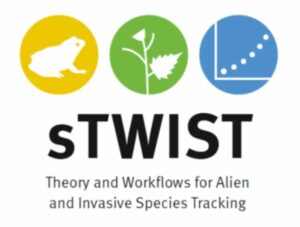The rate of invasive alien species (IAS) establishment quantifies the number of invasive alien species that are expected to have established in a new region or country over the reference period. The unit of measurement is the rate of invasive alien species establishments per unit period (e.g. year). The indicator measures the change in this rate of IAS establishment. The indicator can be disaggregated by taxon, subnational unit (e.g. islands), priority conservation areas, pathways, or type of impact.
This indicator is now headline indicator 6.1 for Target 6 of the Kunming-Montreal Global Biodiversity Framework entitled “Reduce rates of introduction and establishment of invasive alien species by 50%”.
| EBV class Species Populations Species distribution |
For more details, see Invasion trends: An interpretable measure of change is needed to support policy targets.
Purpose
To provide a yearly updated metric of how the numbers of introduced invasive alien species are changing globally and in countries, as well as by pathways of introduction. The rate of invasive alien species establishment benefits from country checklists of IAS provided by the Global Register of Introduced and Invasive Species (GRIIS), ongoing collection of data by countries on the presence and distribution of IAS, GBIF occurrence data and a range of other resources (see below). It is designed to measure and report on long-term progress to slowing the rate of IAS introductions, within and across policy reporting cycles.
Coverage
The indicator uses IAS species data at a country resolution or major taxonomic groups and from 1970 onwards.
Methods
For further information on developments and methods underpinning this indicator see:
- EBV framework for IAS: https://bit.ly/2CsCq8H
- An Essential Biodiversity Variable Approach to Monitoring Biological Invasions: Guide for Countries
- Country checklists: https://bit.ly/31ZrQCM
- GRIIS methods-: https://go.nature.com/2yYfcFh
- Compiled Compendium of 190 + Country Checklists: https://www.nature.com/articles/s41597-022-01514-z
- Data workflow: https://doi.org/10.3897/neobiota.59.53578
- Review of invasion indicators: https://conbio.onlinelibrary.wiley.com/doi/full/10.1111/conl.12918
Developed and supported by
 |
 |
 |
 |
 |
|

 Rate of invasive alien species establishment
Rate of invasive alien species establishment